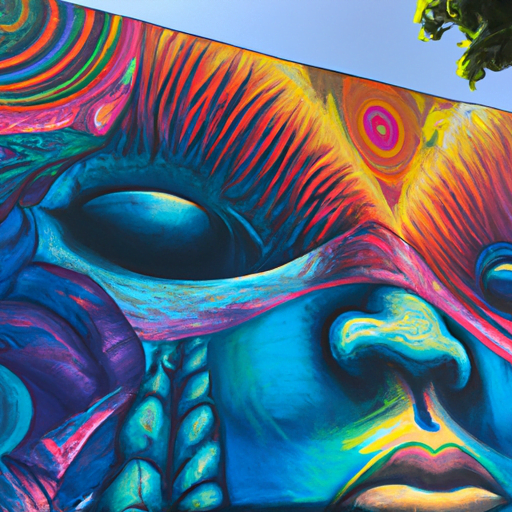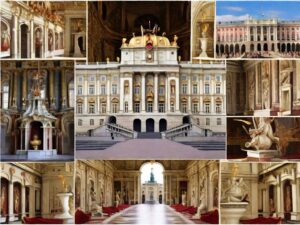Immerse yourself in the vibrant world of art and expression as you explore the rich arts scenes that await you. From the intricate beauty of indigenous artwork to the bold and captivating strokes of street art, these artistic forms offer a glimpse into the diverse and captivating stories that surround us. Discover the cultural significance and artistic mastery that each piece holds, as you embark on a journey that will awaken your senses and expand your understanding of the world around you. So grab your artistic spirit and get ready to dive into a world of creativity that knows no bounds.
Table of Contents
ToggleIndigenous Artwork
Indigenous Culture and Street Art
Indigenous artwork is an integral part of the rich and diverse indigenous cultures around the world. The art forms created by indigenous communities reflect their deep-rooted connection with nature, spirituality, and their unique cultural identities. Through their artwork, indigenous artists convey their traditions, stories, and knowledge, preserving their heritage and passing it on to future generations.
Traditional Indigenous Art Forms
Traditional indigenous art forms vary across different communities, each possessing its own distinct techniques and styles. These art forms often use natural materials such as wood, stone, clay, feathers, and natural pigments derived from plants and minerals. From intricate wood carvings and sculpture to vibrant textile designs and basketry, traditional indigenous art represents a profound connection to the land, ancestors, and spiritual beliefs. It beautifully encapsulates the cultural diversity and creativity within indigenous communities.
Contemporary Indigenous Art
Contemporary indigenous art embraces both traditional techniques and modern mediums, reflecting the evolving nature of indigenous culture and expression. With the incorporation of new materials like canvas, acrylic paints, and mixed media, contemporary indigenous artists push the boundaries of their artistic practices. They explore themes such as identity, social issues, and the impacts of colonization while staying rooted in their cultural heritage. Their artwork serves as a powerful medium for self-expression, cultural revitalization, and raising awareness about indigenous rights and issues.
Indigenous Art Galleries
Indigenous art galleries play a crucial role in promoting and supporting indigenous artists and their artwork. These galleries provide a platform for indigenous artists to showcase their works and connect with a wider audience. Visitors can immerse themselves in the beauty and intricacy of indigenous art, appreciate the diversity of styles and techniques, and gain a deeper understanding of the cultural significance behind each piece. By purchasing indigenous artwork from these galleries, you not only support the artists directly but also contribute to the recognition and preservation of indigenous cultures.
Indigenous Art Events
Indigenous art events bring together artists, collectors, enthusiasts, and the general public to celebrate and share the richness of indigenous artwork. These events often feature exhibitions, workshops, performances, and interactive experiences, creating a vibrant and immersive atmosphere. Attending these events is an incredible opportunity to engage with indigenous artists, learn about their creative processes, witness live demonstrations, and even purchase unique pieces directly from the creators. From art fairs and festivals to cultural gatherings, indigenous art events provide a platform for cultural exchange, dialogue, and appreciation.
Street Art
History of Street Art
Street art has a long and fascinating history that can be traced back to the dawn of human civilization. While it has evolved and taken on various forms over time, street art has always been a powerful means of self-expression and a reflection of societal issues. From ancient cave paintings and murals in ancient civilizations to graffiti and stencil art in modern times, street art has transcended cultural and geographical boundaries, leaving its mark on cities across the globe.
Different Styles of Street Art
Street art encompasses a wide array of styles and techniques, each with its own visual language and message. From vibrant and colorful murals to stencils and wheatpaste posters, street artists utilize diverse mediums to convey their ideas and perspectives. Some popular styles of street art include graffiti, stencil art, muralism, paste-ups, and installation art. Each style carries its own unique aesthetic and creative approach, reflecting the individuality and creativity of the artists behind them.
Famous Street Artists
Throughout history, numerous street artists have gained recognition for their groundbreaking work and contributions to the art world. From the iconic Banksy, known for his thought-provoking and politically charged artworks, to the incredible talent of Shepard Fairey, whose “Hope” poster became an iconic symbol of Barack Obama’s presidential campaign, these artists have made a lasting impact on the street art movement. Their works not only adorn the walls of cities but have also been showcased in galleries and museums, further blurring the line between street art and traditional art forms.
Street Art Festivals
Street art festivals have become a prominent feature in many cities around the world, showcasing the vibrancy and creativity of the street art community. These festivals bring together local and international artists, providing them with a platform to create stunning murals and installations in public spaces. Visitors can witness the transformation of neighborhoods and witness the talent of these artists as they breathe new life into urban landscapes. Street art festivals foster a sense of community, cultural exchange, and appreciation for the unique art form, allowing people from all walks of life to engage with and be inspired by the power of street art.
Street Art Tours
Exploring a city’s street art scene through organized street art tours is a fantastic way to dive deep into the urban art world. Experienced tour guides lead participants through streets and alleyways, unveiling hidden gems and sharing fascinating stories behind the artworks. These tours not only provide insights into the artists’ techniques and styles but also shed light on the social, political, and cultural relevance of street art within the local context. Participants have the opportunity to interact with the artwork firsthand, engage in discussions, and gain a deeper appreciation for the creativity and talent of the street artists.
In conclusion, indigenous artwork and street art offer unique and captivating perspectives on art and expression. They both provide a platform for artists to showcase their creativity, convey powerful messages, and inspire individuals from all walks of life. By embracing and exploring these rich art scenes, we can not only appreciate the diversity and beauty of artistic expression but also gain a deeper understanding of the cultures and societies they represent. So, whether you find yourself admiring a vibrant mural on a city street or immersing yourself in the intricate details of traditional indigenous artwork, remember to embrace these artistic journeys and allow yourself to be captivated by the stories they tell.





